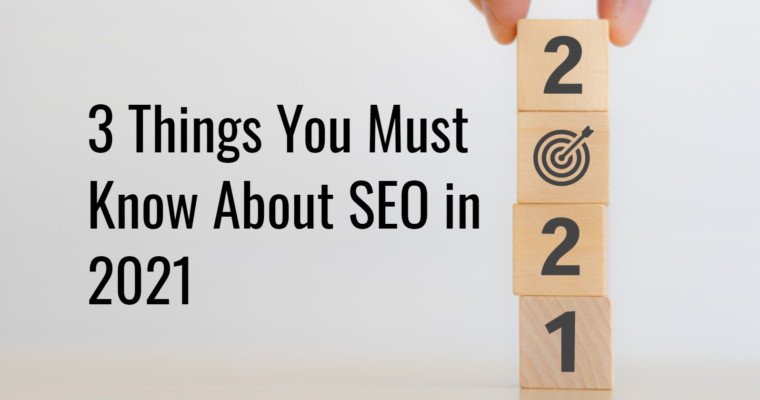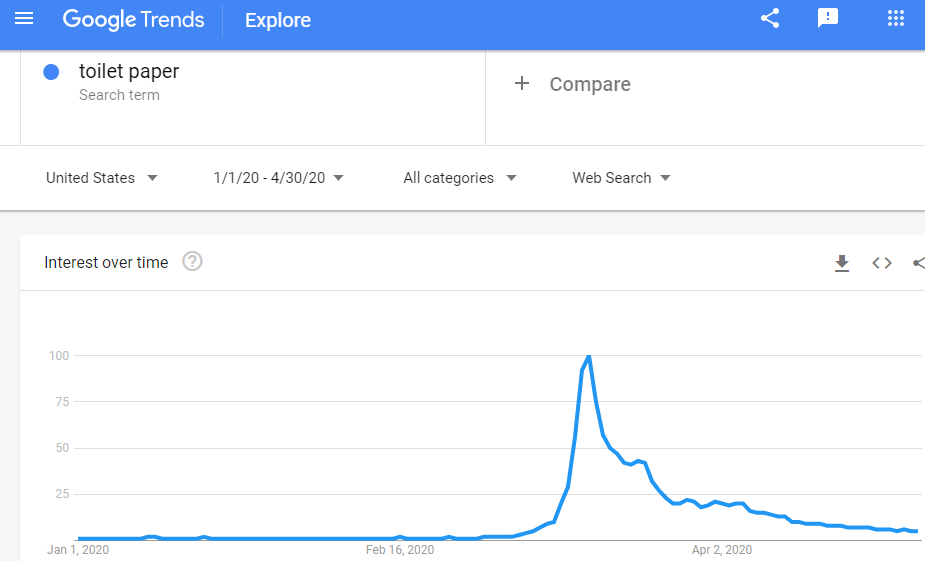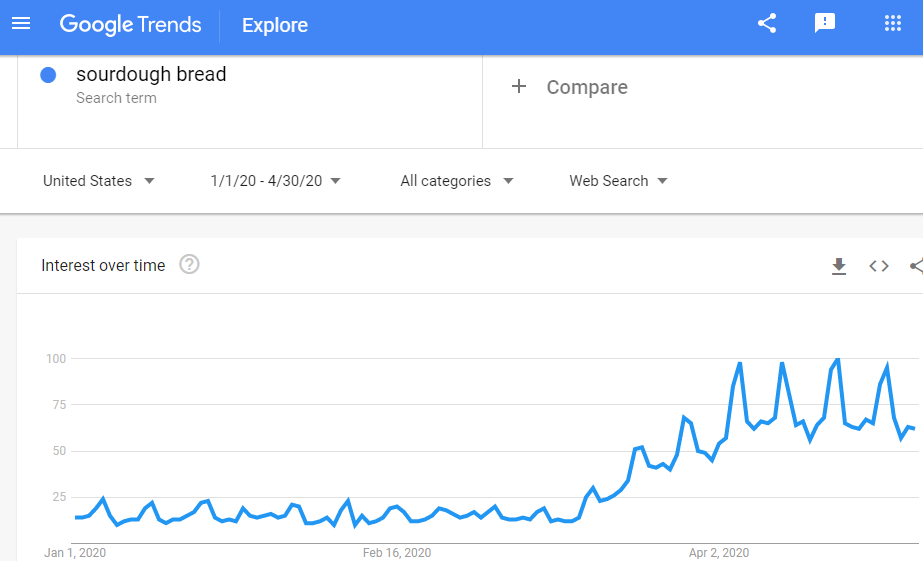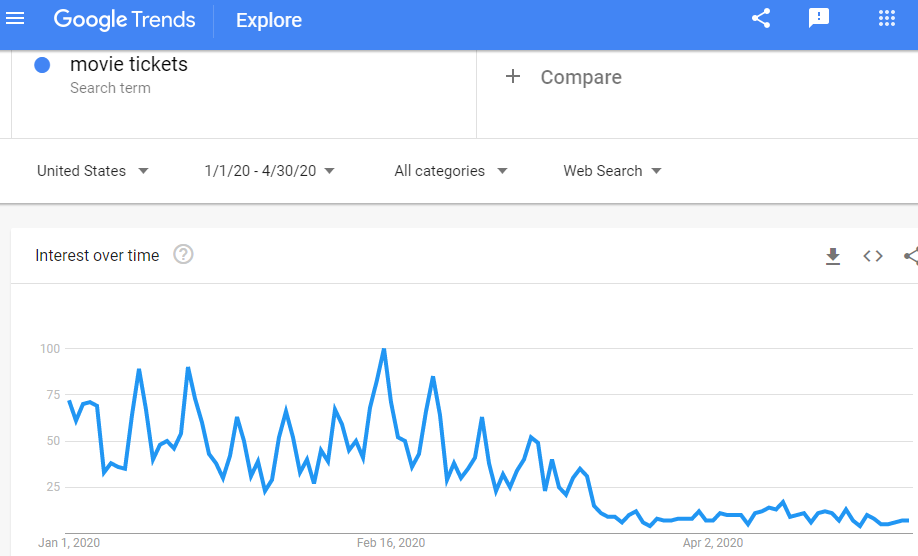3 Things to know about SEO in 2021
2020 was full of unexpected events that affected SEO. Are you ready for 2021? Here are three things you need to keep in mind.

2020 has been…a year.
I think this screenshot of a Giphy search for “2020” just about sums it up.

But despite all the challenges we’ve faced as humans this year, 2020 hasn’t been all bad.
After all, I welcomed my youngest son to the world this year, and I think he’s pretty great!
I also learned a lot about our industry, SEO, and I feel we should all pay close attention to what transpired this year and leverage that information to become better, more prepared search marketers moving forward.
So, without further introspection, here are three things you need to know about SEO in 2021!
1. Search Intent & Demand Are Fluid
It’s important to know that search intent and demand are fluid – and much more so than I previously thought.
Understanding searcher intent is a critical part of a successful SEO strategy as you need to have a fundamental understanding of the intent behind a search query in order to build a page that satisfies that intent.
If your page is the best match for the intent, Google will rank your page in their results, simple as that (although making your page the best match is a bit more complicated).
But what happens when a global pandemic changes the search intent for a query?
Well, you either adapt or lose rankings.
For example, Lily Ray of Path Interactive shared a study where she saw queries like [Alcoholics Anonymous] and [Alcoholics Anonymous Meetings] returning websites like AA-Intergroup and In the Rooms which offer virtual recovery meetings and resources.
This demonstrates how quickly Google can adjust their results to match intent for people in quarantine who needed virtual recovery support, even without including “virtual” or “online” in their search query.
And shifts in searcher intent aren’t the only ways searcher behavior can change.
There’s also the potential that search volume and interest in a given query could explode or disappear almost overnight.
Again, we saw this happen in multiple verticals during the early stages of the pandemic.
Check out this Google Trends graph for [toilet paper]:

Or this trend line for [sourdough bread]:

We can also see how quickly search interest can dip as well by looking at [movie tickets]:

While the odds of another pandemic like COVID-19 happening are (hopefully) slim, these graphs illustrate how important diversifying your keywords can be.
In fact, it’s strong evidence that you should diversify your entire marketing strategy, rather than putting all your eggs in the “Google basket.”
These graphs also emphasize the importance of flexibility and being able to capitalize on opportunity, or pivot when opportunity lies elsewhere.
So how do you protect against shifting search intent or a massive drop in search volume?
While you can’t control searcher behavior, you can monitor it and adjust accordingly.
To identify potential shifts in searcher intent, keep an eye on your target SERPs and how they are changing.
If you see more and more pages starting to rank that serve a different intent than your page, it’s likely Google is testing serving a different intent – you may need to eventually change your page or risk losing rankings.
To track search interest, you can choose from a variety of tools that measure monthly search volume, such as SEMrush, Moz, or Ahrefs.
Google Trends will give you some directional sense of where search interest is headed as well.
In 2021, you should never get too comfortable.
Being flexible and having the ability to adapt is critical to online success.
2. Local Businesses & Local SEO Pros Must Be Agile
Speaking of needing to be able to adapt quickly, nowhere is that more true than in local search this year.
One of the hardest-hit sectors during this pandemic has been local businesses.
Lockdowns and social restrictions forced many of these business owners to get creative and find new ways to stay connected with their clientele such as contactless pick-up or virtual consultations.
However, for many businesses, simply letting their customers know if they’re open or not can make a huge difference.
To their credit, Google has done a decent job providing various options within Google My Business for local businesses to communicate with their customers.
I attended an impressive presentation from GMB savant Joy Hawkins earlier this year, outlining all the options available within Google’s platform. Some of the recently added GMB features include:
- An LGBTQ-friendly attribute.
- Call buttons in local knowledge panels.
- An online operating hours attribute.
- An online appointments attribute.
If you want to stay up to date on all the new attributes that have been and continue to be added to GMB, I highly recommend checking out this resource on Hawkins’ site.
Although most local businesses are brick-and-mortar locations, they must account for search as a legitimate channel for communicating with customers, and the pandemic highlighted this fact as shutdowns made serving customers in their physical spaces difficult.
The most agile businesses and local SEO professionals should be able to leverage new opportunities from local search by taking full advantage of the tools Google and other search engines provide – and with new features being added all the time, these agile businesses and SEO pros will continue to thrive beyond the pandemic.
3. The SEO Community Continues to Become Stronger
Even in the face of such adversity, the SEO community will remain as open, supportive, and innovative.
I’ve always been proud to be a part of this vibrant community of search professionals, but never more so than this year.
Amid what has been one of the most challenging years in the U.S. and across the globe, I’ve consistently seen SEO professionals stepping up to help one another.
I’ve seen SEO pros supporting other professionals that have been laid off due to the pandemic by sharing their resumes on Twitter and helping them find new roles in the industry.
I’ve also seen numerous search professionals and agencies sharing free advice and information to help businesses during these tough times.
This has always been a practice within SEO, but I’ve seen it especially ramp up during 2020.
In fact, I’ve had the privilege of being part of one such initiative at my own company.
SEO professionals have even been leveraging their non-SEO skills to help raise money for folks affected by COVID or to support positive mental health.
For example, Lily Ray has been putting her DJ’ing skills to work on Twitter with free concerts and even performed an “afterparty” concert for SEJ’s eSummit earlier this year!
I’m always impressed by how open and collaborative the SEO industry is, but this year has felt different as we’ve all leaned on one another during uncommon and challenging circumstances.
I’m proud to be a part of such a wonderful community and it will be stronger still in 2021!
Conclusion
2020 showed that change can happen very quickly, and you need to be agile as an SEO professional to adjust your strategy swiftly to adapt to new search behavior, consumer environments, and potential restrictions.
Fortunately, search is a channel where pivoting and shifting relatively quickly is possible if you’re prepared for it.
So, in 2021, make sure you’re regularly reviewing SERPs to ensure your pages or future pages still align with intent and search interest.
Remember, too, that you’re not alone and there is a whole community out there ready to support you and help you grow.
Connect on social media, leave comments on your favorite blogs, get involved with SEJ’s fantastic Friday Focus series…there are numerous options available to you.
I know it’s been a difficult year for many of us, but I know the future is bright and better times are ahead.
So, thanks for reading, keep your chin up, and let’s keep pushing the search industry forward into 2021 and beyond!
Image Credits
All screenshots taken by author
Author: Andrew Dennis
VIA: SearchEngine Journal




